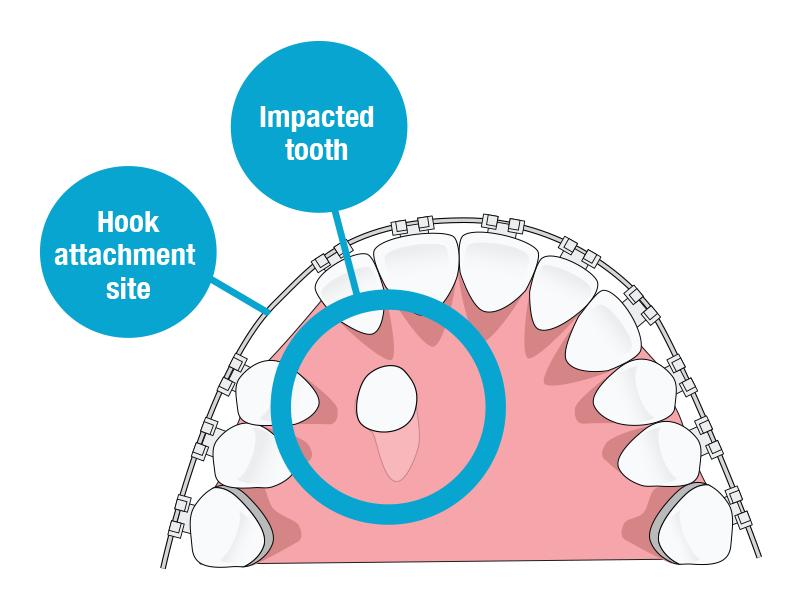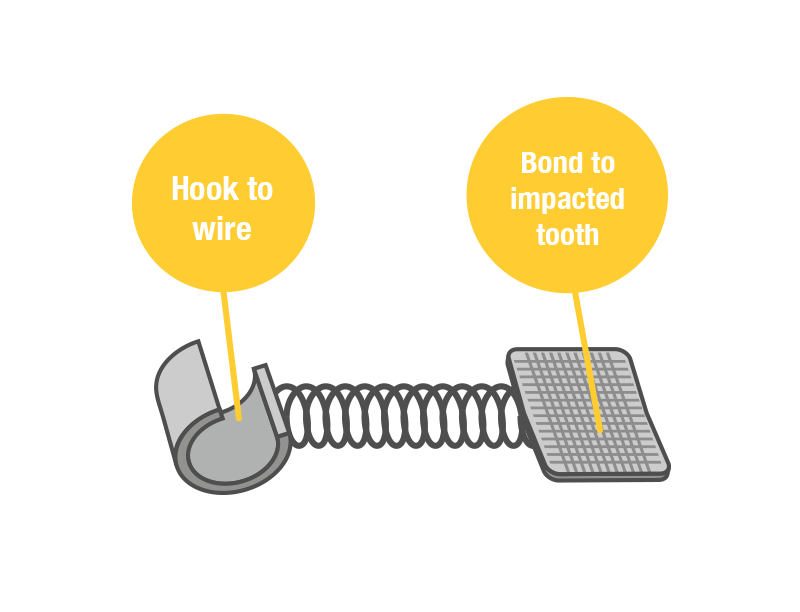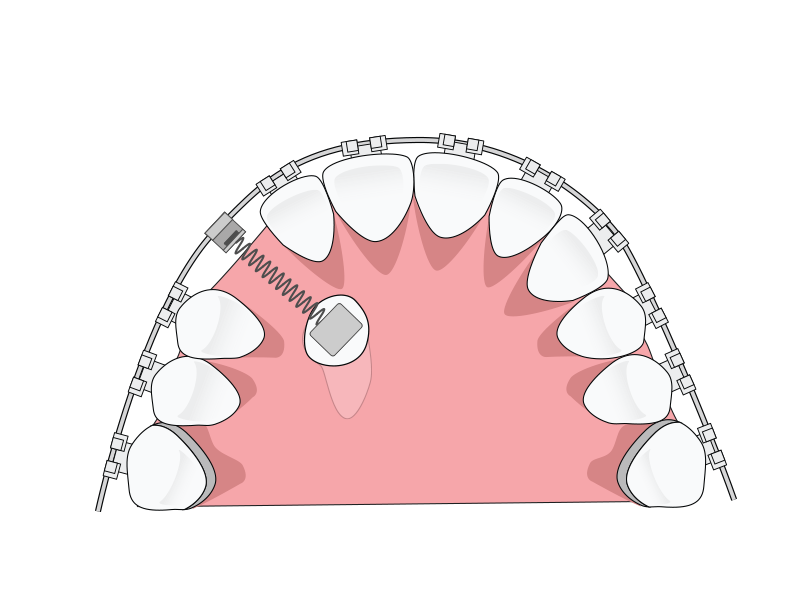Isoglide Spring
Steps and Procedures
Surgeon
BEFORE BONDING THE ISOGLIDE SPRING, PLEASE DISCUSS THE CASE WITH THE ORTHODONTIST TO DETERMINE WHERE THE SPRING CLAMP SHOULD BE ATTACHED TO GIVE THE DESIRED VECTOR OF FORCE.
Step 1 – Follow your normal procedure for exposing the impacted tooth, exposing as much of the facial surface of the clinical crown as possible.
Step 2 – Follow your normal bonding procedure to bond the bracket pad of the Isoglide spring to the tooth. BOND THE PAD WITHIN THE MOST GINGIVAL 1/3 OF THE FACIAL SURFACE OF THE IMPACTED TOOTH TO GIVE THE BEST CHANCE OF BRINGING THE TOOTH INTO THE MOUTH WITHOUT THE NEED TO REACTIVATE THE SPRING. WHEN PLACING ISOGLIDE, ORIENT THE DEVICE SO THAT THE BONDING PAD IS GINGIVAL AND THE CLAMP IS INCISAL ON THE TOOTH BEING BONDED. If the pad cannot be bonded ideally as described, bond the pad as gingivally as possible on the most ideal surface that is accessible.

Step 3 – Gently stretch the spring toward the desired attachment site on the arch wire. Place the clamp on the end of the spring around the wire at this site and fully crimp the clamp closed with a plier. IF YOU DO NOT WANT THE CLAMP TO SLIDE ON THE WIRE, CRUSH IT DOWN FIRMLY WITH A PLIER UNTIL IT CANNOT SLIDE.
Step 4 – Follow your normal procedure for closing the surgical site. The Isoglide spring can be used for both closed and open exposure techniques.
Orthodontist
PLEASE DETERMINE THE DIRECTION THAT YOU WANT THE SPRING FORCE APPLIED TO THE IMPACTED TOOTH AND RELAY SPECIFIC INSTRUCTIONS TO YOUR SURGEON AS TO WHERE THE SPRING CLAMP SHOULD BE ATTACHED TO DELIVER THAT DESIRED FORCE VECTOR.
To help make sure the Isoglide spring has maximum activation, the orthodontist should consider putting an incisal step-down of 4-5mm in the archwire at the site where the spring clamp will be attached BEFORE referring the patient for the exposure surgery. Also consider placing closed coil or rubber tubing at the attachment site of the clamp, as this will make it easier for the surgeon to crimp the clamp in place on the wire without it sliding. Again, if the orthodontist has a specific site to which he or she wants the spring clamp attached, please inform the surgeon of this prior to the exposure surgery.

CLOSED EXPOSURE: When the patient returns for the first orthodontic visit after the impacted tooth has been exposed, the Isoglide spring will already be actively stretched, coming out of the gingiva, and clamped to the arch wire at the desired location by the surgeon. As long as the spring is open and active, there is nothing to be done until the tooth erupts through the gingival tissue and appears in the mouth, at which point the spring may be removed and a normal orthodontic bracket placed.
OPEN EXPOSURE: The Isoglide spring can be bonded to the exposed tooth whenever the orthodontist desires to do so after the open exposure has been completed.
Spring Reactivation
To reactivate the Isoglide spring, follow the following procedure:
Step 1 – Clamp a hemostat tightly on the spring very close to the attachment point where it is clamped on the arch wire.
Step 2 – Using a ligature cutter, cut the spring between the hemostat and the clamp on the arch wire so that the spring is free and no longer attached so the arch wire. BE CAREFUL NOT TO LET GO OF THE SPRING FROM THE HEMOSTAT. DOING SO MAY ALLOW THE SPRING TO RETRACT BACK UP INTO THE GINGIVA, REQUIRING AN ADDITIONAL SURGERY TO REEXPOSE THE TOOTH.
Step 3 – Gently stretch the spring to reactivate it, slowly pulling the spring down out of the gingiva if using a closed eruption technique. Lay the stretched spring across the arch wire at the desired attachment site.
Step 4 – Using a ligature tie, TIGHTLY tie the spring to the arch wire to secure it in place.
Step 5 – Use a ligature cutter to clip off most of the excess spring extending beyond the new tie point. Be sure to leave about 2mm of spring extending beyond the new tie point to avoid the spring unwinding and slipping off the wire.

